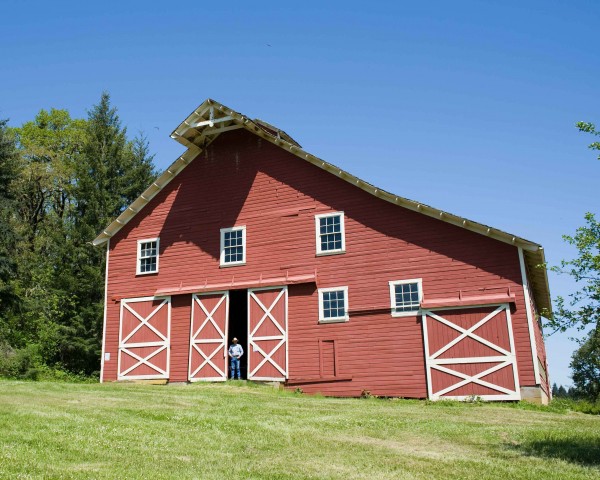
Renovating an 18th-19th century barn wouldn’t be a cheap and easy task for any owner, and the same goes for the Open Space Institute of New York State. Currently, they are the owners of the Studley Barn, located on Butterville Road in New Paltz. Ultimately, they will have the choice of whether to demolish or renovate it. They await research from the Historic Preservation Commission to determine whether the building would be considered a historical landmark, to be protected under federal government.
The Breezy Lawn Farm, located on 122 Butterville Road, is considered a designated historical landmark, according to the Town of New Paltz Historical Commission. This plot of land, which contains the Gatehouse off of Route 299, may include the Studley Barn. Even as a historical landmark, the barn’s level of significance to the community may affect the OSI’s decision to repair structural damage.
Using local laws to determine whether property is considered a historical landmark is integral to determining if the barn should be saved.
Joe Orfetelli, Chair of the Historical Preservation Commission, said he “will check records … to make sure that the property that is being discussed is in our jurisdiction. I’ve looked at maps, which aren’t clear enough; I’ll go to the Mohonk archives to see whether it is in our boundary.”
“We don’t know if it’s in the National Registrar territory. But I don’t think it is,” Orfetelli said.
The OSI were hopeful that they could save the barn and repurpose it.
“As we began this process and at the time of our meeting in September, it was fully our intent to repurpose the building,” said Eileen Larrabee, Associate Director for the Alliance for New York State Parks. “This will include making minor structural improvements, to support OSI management of our properties between the Wallkill River and Butterville Road including the River-to-Ridge Trail.”
However, upon hearing the NYS engineering report, Larrabee learned of conditions that may alter their ability to repurpose the barn.
“Although it’s tough to notice from the road, the building is leaning significantly to the east and is shifting off of its foundation,” she said. “According to our consulting structural engineer, the integrity of the barn is severely compromised, including inadequate wall and column foundations, leaning structural columns on both barn levels, and weak roof framing. We were advised that the barn is in the process of failing and to not use the structure for any purpose.”
The condition of the barn, whether built in the 1800s or 1900s, is deteriorating due to age. Larrabee realizes that time and weather conditions can damage structures considerably, and to repurpose the building may be more painstaking than to demolish it and build a new one.
Caryl Sobel of the Historic Preservation Commission says that “The age of the barn has not been verified as historically accurate (as far as available records), but the State is estimating the date of construction as of 1920.”
“We are currently weighing a range of options including letting nature and gravity take their course, embarking on an extensive stabilization project and replacing the barn with a new barn that is similar in size and location,” Larrabee said. “We are also in the process of securing additional studies and analyses for each option that will inform our decision making regarding the future of the barn.”
Though the final decision rests in the OSI’s hands, Sobel said that “The Town Historic Preservation Commission welcomes input from the community on any property which they feel has preservation merit. We are also available to discuss historic preservation law, policy and procedures and our meetings are open to the public.”
Their contact information is at townofnewpaltz.org/boards.
Determining the future of the Studley building will take about two months, after options are cleared with informed analyses and studies of the barn’s safety and worth as a local landmark.
